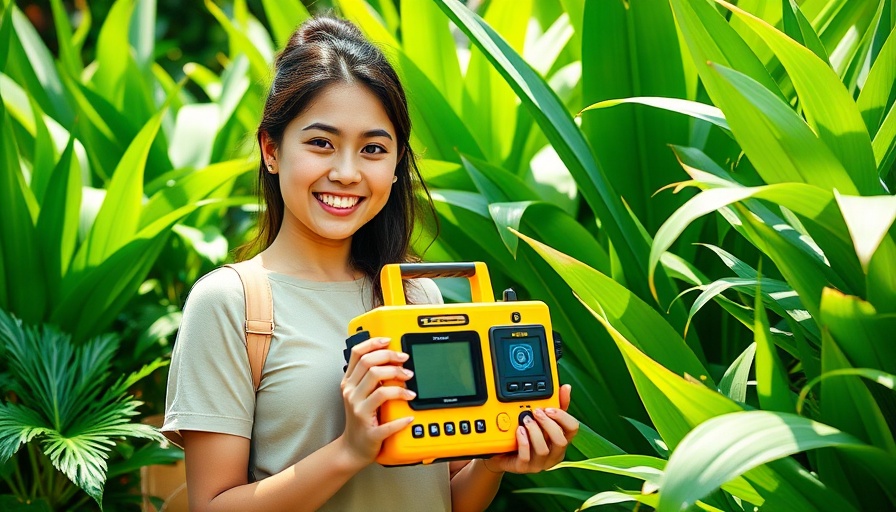
High-Tech Buoys Anchored in Australia Transform Coastal Monitoring
The introduction of innovative Spotter buoys along the coast of Victor Harbor, South Australia, marks a significant advancement in scientific monitoring of oceanic conditions. Deployed by an exceptional collaborative effort between Flinders University researchers, including Associate Professor Graziela Miot da Silva and PhD student Maya Lambert, as well as the South Australian Research and Development Institute (SARDI), these state-of-the-art buoys are set to provide real-time data on wave height, sea temperature, and more.
Unusually warm ocean temperatures this year have led to the appearance of destructive brown foam along the southern coastline, stemming from microalgal blooms. This urgent situation illustrates the necessity of round-the-clock data collection, which these Spotter buoys aim to facilitate. They are designed to gather essential oceanic data through advanced metocean technology, relaying information on wave behavior and environmental conditions back to researchers and the community.
Enhancing Coastal Understanding Through Innovation
An important aspect of this initiative is its potential to fill significant gaps in coastal data, which has been lacking over the years. The real-time ocean data provided by the Spotter buoys will form a strong baseline for ongoing coastal research, enabling scientists to better understand the dynamics of wave patterns and temperature fluctuations. As Professor Patrick Hesp of Flinders University's Beach and Dune Systems (BEADS) Lab mentions, having access to accurate wave data can improve coastal management practices and inform critical decisions for local economies reliant on marine industries.
This project is particularly timely, given the rising challenges posed by climate change impacting oceanic conditions and coastal configurations. The insights gained from these buoys can lead to the formulation of predictive models that account for future coastal changes, providing invaluable assistance to local governments and stakeholders to devise effective management strategies.
The Role of Real-Time Data in Coastal Management
Real-time data gathered by the Spotter buoys will serve as more than just a weather report; it is expected to play a significant role in improving coastal resilience against erosion and flooding. With the help of this data, coastal managers can make informed decisions about dredging operations, navigation safety for commercial and recreational fishing, and even emergency response plans for search and rescue operations.
The collaboration not only benefits scientific research but also bolsters local tourism and marine activities by providing essential information about safe water conditions. This highlights the broader implications of integrating technology in environmental monitoring – a developing field that increasingly influences how we understand and interact with our natural resources.
Broader Implications of Technological Integration in Environmental Science
As technology advances, the integration of tools like the Spotter buoys creates new possibilities for understanding environmental changes. These buoys, designed for easy deployment and real-time data transmission, could also inspire similar projects globally, inviting more research into coastal configurations affected by climate shifts.
In addition to research benefits, the deployment strategy adopted in South Australia can serve as a model for other regions striving to enhance their coastal monitoring capabilities. By investing in technology, regions facing environmental challenges could better prepare for extreme weather events and changes that threaten coastal communities and ecosystems.
Community Engagement and Future Research Directions
The success of this initiative depends on community engagement and transparency. Local residents, fishermen, and tourists will be more informed about the changing conditions of their coastal surroundings through accessible data. This fosters a greater sense of stewardship among stakeholders, emphasizing the importance of maintaining a healthy marine environment.
Moreover, the next steps include ensuring that the data remains sustainable and useful over time. The scholarship for Maya Lambert, aimed at maintaining and processing this data, is a step in the right direction toward building capacity for ongoing marine research.
Conclusion: Embracing Innovation for Stronger Coastal Management
In summary, the deployment of Spotter buoys at Victor Harbor not only facilitates immediate monitoring of coastal conditions, but also opens a gateway to a future where technology and environmental science collaboratively tackle pressing challenges posed by climate change. Their successful integration into local marine operations underscores the need for new approaches to research and data use in environmental management.
As technologies like these shape the future of scientific monitoring, local communities and policymakers will be better equipped to make informed decisions, ensuring both environmental sustainability and economic stability.
 Add Row
Add Row  Add
Add 






Write A Comment